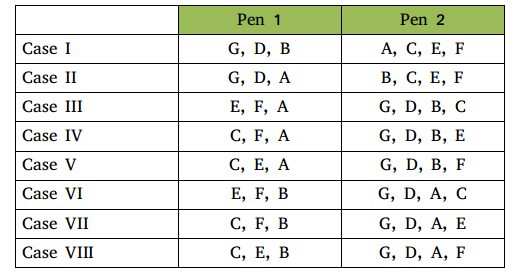Sign in
Please select an account to continue using cracku.in
↓ →
Questions are based on a set of conditions. In answering some of the questions, it may be useful to draw a rough diagram. Choose the response that most accurately and completely answers each question.
In a local pet store, seven puppies wait to be introduced to their new owners. The puppies, named Ashlen, Blakely, Custard, Daffy, Earl, Fala and Gabino, are all kept in two available pens. Pen 1 holds three puppies, and pen 2 holds four puppies.
If Gabino is kept in pen 1, then Daffy is not kept in pen 2.
If Daffy is not kept in pen 2, then Gabino is kept in pen 1.
If Ashlen is kept in pen 2, then Blakely is not kept in pen 2.
If Blakely is kept in pen 1, then Ashlen is not kept in pen 1.
Let us name the puppies as A, B, D, D, E, F and G on the basis of the first alphabet of their name.
From the first two statements we can infer that G and D must be in the same pen. From the last two statements we can infer that A and B must be in different pens.
Any other information is not provided. So, we have to make cases for different possibilities:

From the table, we can see that only the combination given in option D is possible (case II).
Hence, option D is the correct answer.

Click on the Email ☝️ to Watch the Video Solution
Educational materials for CAT preparation